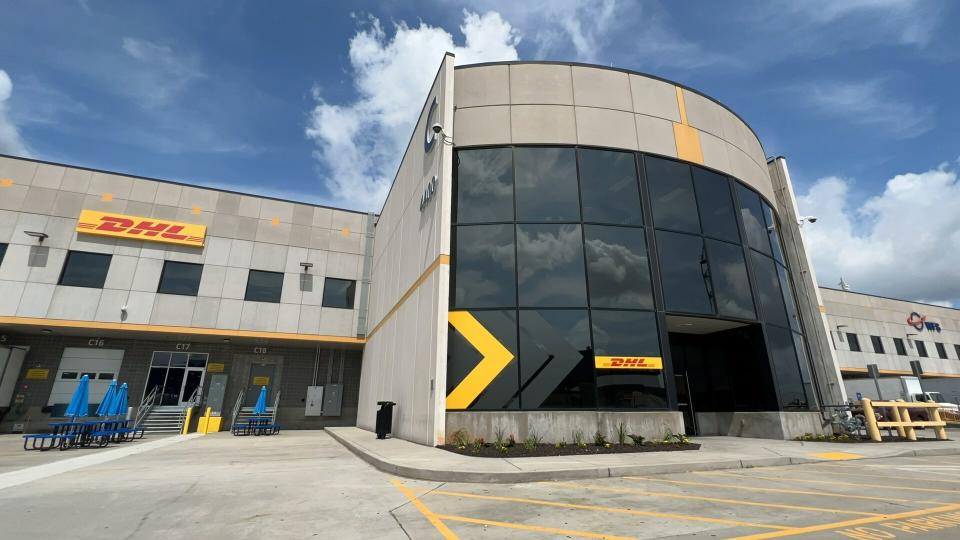Levi’s New E-Comm Fulfillment Center to Start Shipping in July

Levi’s long-awaited digital fulfillment center in Northern Kentucky is finally open for business.
The 575,700-square-foot facility in Erlanger, Ky., which cost approximately $48 million to upgrade and will create an estimated 300 jobs, is designed to bring all of Levi’s U.S. e-commerce business under its own real estate.
More from Sourcing Journal
Levi's Finds Opportunities in DTC, Strategic Price Cuts and Lower Rises
DTC Chat: Gary Lenett on Expanding Duer's Physical Store Footprint
Chip Bergh, Levi Strauss & Co. president and CEO, confirmed the opening during the denim company’s second-quarter earnings call last week, saying orders will “begin shipping from there this month.”
The newly opened facility will complement two other distribution-related facilities in nearby Hebron, Ky., where the company employs roughly 300 people. The new facility will fulfill e-commerce for customers in the eastern U.S.
Levi’s now has 13 distribution centers worldwide, including two in Canton, Miss. and Henderson, Nevada. The Nevada facility was Levi’s first owned warehouse that fulfilled orders for e-commerce, brick-and-mortar and wholesale.
Bergh said the Kentucky facility will “drive more agility and inventory positioning, reducing lead times, improving customer satisfaction and accelerating digital margin expansion over time.”
He described Levi’s move to a “DTC-first” business as the company’s second biggest priority after the growth of its brands, coming at a time where the jeanswear firm has prioritized its direct sales and has recently seen outsize growth in that area.
DTC net revenues increased 13 percent to $621.5 million in the second quarter, driven by growth in company-operated mainline and outlet stores and e-commerce sales, which jumped 20 percent across all geographical segments.
The channel now represents 44 percent of total sales in the first half of 2023, an increase from the 38 percent of net revenues DTC brought in during the 2022 period. Conversely, the wholesale channel generated 56 percent of net revenues, down from 62 percent in the first six months of last year.
Wholesale saw net revenues decline 22 percent to $715.3 million in the second quarter. Adjusting for a shift in wholesale shipments where goods got pushed up from the second quarter to the first quarter, global wholesale net revenues were down by low-double-digits. The shift came as Levi’s implemented a new ERP system across the U.S.
Bergh described the factors behind the wholesale slowdown. Not only are macroeconomic concerns pressuring the price-sensitive consumer, but the company is also dealing with the inventory backlog that started piling up last year, he said.
“The lower fill rate resulted in higher customer out-of-stocks and less newness on the floor the last few quarters,” said Bergh.
While the new distribution center will exclusively fill direct e-commerce orders and not wholesale, it can lighten the load for the Hebron, Canton and Henderson warehouses by housing inventory from those locations, if needed.
Levi’s isn’t done expanding its global distribution network, as it is still constructing a LEED-certified distribution center in Dorsten, Germany. That facility is expected to open in 2024.
And late last year, the company got the okay to build its largest project yet, a 1.26 million-square-foot industrial building in Kentucky’s Boone County. Levi has not confirmed the project’s purpose, but it will have 66 bays, and 450 parking spaces for tractor trailers.
DHL debuts $84.5 million Atlanta hub
DHL Express, the logistics giant’s international express shipping services wing, also opened its Americas regional hub at the Hartsfield-Jackson Atlanta International Airport.
The $84.5 million facility is designed to further strengthen the company’s connections and service capabilities between the U.S. and key global markets, increasing capacity and speeding transit times.
Spanning 100,000 square feet, the state-of-the-art hub establishes direct connections between 19 cities in the Southeastern U.S. and markets including Europe and major DHL hubs worldwide. Future plans involve adding flight connections to Hong Kong, Mexico, the U.K. and Puerto Rico.

The Atlanta hub is fully automated, equipped with technology capable of sorting up to 20,000 pieces per hour. To ensure faster clearance of DHL customer shipments, the hub employs in-house customs brokers and collaborates with on-site U.S. Customs and Border Protection (CBP) personnel.
Additionally, DHL implemented advanced threat detection and security screening technologies, which effectively can prevent the entry of illegal and hazardous commodities into its network.
The hub also aims to set new standards for sustainability, generating up to 50 percent of its on-site energy consumption through 65,000-square-foot rooftop solar panels, preventing the release of 380 metric tons of CO2 emissions annually. Moreover, the hub employs environmentally conscious features such as LED lights, electric forklifts, dock seals, and rapid rise doors, further minimizing its environmental impact.

